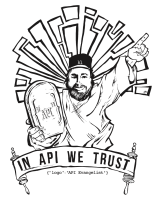This article originally appeared on Gigaom
– By Andy Thurai (@AndyThurai) and Atanu Basu (@atanubasu). Andy Thurai is the Chief Architect and CTO for Intel App Security unit. Atanu Basu is the CEO of Ayata.
Knowledge is power, according to Francis Bacon, but knowing how to use knowledge to create an improved future is even more powerful. The birth of a sophisticated Internet of Things has catapulted hybrid data collection, which mixes structured and unstructured data, to new heights.
Broken Analytics
According Gartner, 80% of data available has been collected within the past year. In addition, 80% of the world’s data today is unstructured. Using older analysis, security, and storage tools on this rich data set is not only painful, but will only produce laughable results.
Even now, most corporations use descriptive/diagnostic analytics. They use existing structured data and correlated events, but usually leave the newer, richer, bigger unstructured data untouched. The analyses are built on partial data and usually produce incomplete takeaways.
Smarter Analytics to the rescue
Gaining momentum is a newer type of analytics technology, called prescriptive analytics, which is about figuring out the future and shaping it using this hybrid data set. Prescriptive analytics is evolving to a stage where business managers – without the need for data scientists – can predict the future and make prescriptions to improve this predicted future.
Prescriptive analytics is working towards that “nirvana” of event prediction and a proposed set of desired actions that can help mitigate an unwanted situation before it happens. If a machine prescribes a solution anticipating a future issue and you ignore it, the machine can think forward and adapt automatically. It can realize there was no action taken and predict a different course of events based on the missed action and generate a different prescription that takes into account the new future.
Read more of this post
 ation was about compromising integrity and beliefs for money. You might have seen his personal blog on the news lately about him turning down a big money offer to continue to do what he likes without the shackles. His blog, and the follow-up conversation we had, resonated very well with me. Some of his liberating thoughts were eye-opening to me (
ation was about compromising integrity and beliefs for money. You might have seen his personal blog on the news lately about him turning down a big money offer to continue to do what he likes without the shackles. His blog, and the follow-up conversation we had, resonated very well with me. Some of his liberating thoughts were eye-opening to me (
You must be logged in to post a comment.